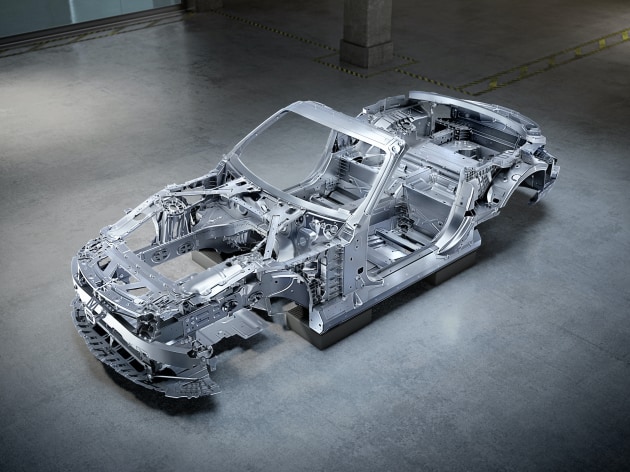It began in 1952 with a filigree space frame, which in the first SL combined low weight with the highest possible torsional rigidity. This construction was conceived for its original use in motorsport and further developed to provide the backbone for the later production model in coupé and roadster form. When the all new roadster icon takes to the stage this year, its basis will be a completely new vehicle architecture developed by Mercedes-AMG. The lightweight composite aluminium chassis provides the basis for precise driving dynamics, high comfort, optimal packaging and sporty body proportions, the company says.
The frame construction, designed specifically to cope with tensile and compressive stress, allows for small tube diameters. Stability is ensured by numerous closed triangles, which transfer the occurring forces to a tubular pyramid at the end of the engine compartment.

Intelligent material composition with high aluminium content and new fibre composites
In the new SL, on the other hand, the intelligent material composition of aluminium, steel, magnesium and fibre composites ensures the highest possible rigidity in conjunction with low weight. Optimised material cross-sections and sophisticated component shaping create space for the required comfort and safety features, the sophisticated technology and the soft top. Other targeted measures include aluminium thrust panels on the underbody and function-integrated struts at the front and rear. The instrument panel support made of magnesium, along with part of the front module cover bridge made out of a fibre composite material with a mixture of glass fibres and carbon, also demonstrate the engineers' efforts to achieve the best possible, customised use of the most diverse materials. This also applies to the windscreen frame made of high-strength, hot-formed tubular steel. This, in conjunction with a system behind the rear seats that extends at lightning speed if necessary, serves as rollover protection.



